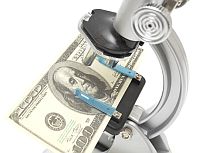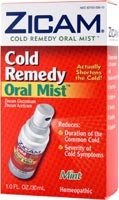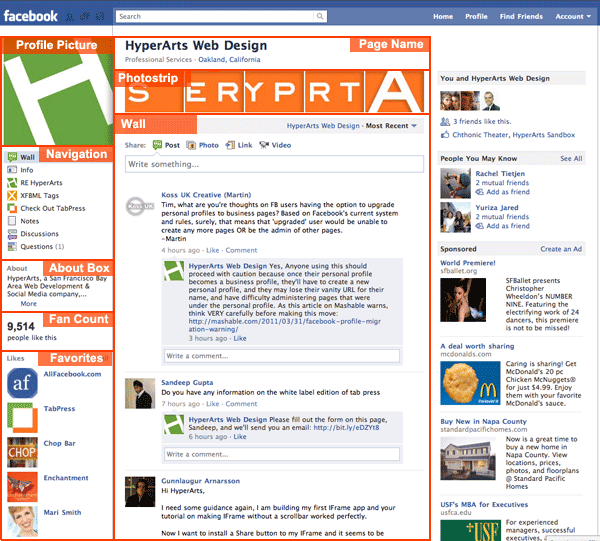This is a guest post by Julian Rockwood, a product manager at Signal.
For small businesses, marketing often takes a back seat to day-to-day operations. They acknowledge that marketing is important; yet there are only so many hours in the day. Compounding the challenge: Consumer use of emerging technologies is moving faster than a typical business owner can keep up with.
That’s why at Signal, we’ve dedicated a piece of our business to providing an affordable and simple product to help small businesses leverage mobile marketing, social media and email to grow and nurture their customer base.
While it seems like there’s a new tool added to the marketing toolbox each day, these methods are gaining traction thanks to their captivating call-to-actions and instant-engagement capabilities. Based on our experiences, we’ve developed the following tips to help small businesses understand how to incorporate text messaging, mobile-optimized email, and QR codes to complete digitally.
Good Things Come on Packages
 To see creative, effective uses of QR Codes in action, check out upcoming food manufacturers. Competition is stiff in the consumer-packaged-good (CPG) space. Small farms, chefs, and foodtrepreneurs jump through hoops to get a SKU of their product on shelves at the local grocery chain. They have to do something to differentiate themselves from the larger brands.
To see creative, effective uses of QR Codes in action, check out upcoming food manufacturers. Competition is stiff in the consumer-packaged-good (CPG) space. Small farms, chefs, and foodtrepreneurs jump through hoops to get a SKU of their product on shelves at the local grocery chain. They have to do something to differentiate themselves from the larger brands.
To keep consumers engaged, aware of their product, and demanding more, small CPG brands have incorporated text-driven calls-to-action and QR codes on packaging. This simple tool allows them to deliver content to their consumers in real time, wherever they are. This connection equips small CPGs to collect data with a web form, share a video about their commitment to quality, provide recipes, register a loyalty code, or even survey their customers.
For example, Food Should Taste Good is a small company focused on making healthy snacks that taste good (duh!). Looking for simple ways to incentivize people to try their product and opt-in to learn more about their brand in the future, they launched a sweepstakes this summer that used QR codes as the entry method. Customers could browse down the snack aisle, see the QR code and call to action to enter on their package, scan the code from their smartphone and be taken to a mobile web form to provide their email to enter. Food Should Taste Good knew that adding new subscribers to their email-marketing list was the ticket to providing their fan base information and offers that will continue to drive demand and grow their customer base.
 They’re not alone in this field. Signal customer Smart Chicken, maker of organic chicken products, recently decided to reinvest in QR codes after a successful test-run. During the test, Smart Chicken created recipe cards that doubled as as a shopping list. The cards included QR codes to take viewers to a mobile web page with videos of chefs preparing the recipes. After experiencing an 80% increase in sales during this promotion, Smart Chicken was eager to expand their use of QR codes.
They’re not alone in this field. Signal customer Smart Chicken, maker of organic chicken products, recently decided to reinvest in QR codes after a successful test-run. During the test, Smart Chicken created recipe cards that doubled as as a shopping list. The cards included QR codes to take viewers to a mobile web page with videos of chefs preparing the recipes. After experiencing an 80% increase in sales during this promotion, Smart Chicken was eager to expand their use of QR codes.
“Because of our success with the holiday recipe card promotion, we’ve decided to take the next step and explore printing QR codes directly on a few select product packaging to ensure that Smart Chicken offers our customers this same interactive experience,” said Mark Eckstrom, director of marketing at Smart Chicken.
While critics argue over whether QR codes use will reach critical mass with consumers, it’s entirely evident when you walk down store aisles that small brands are picking up on this engagement tool and creating relationships.
Couponing Goes Digital
While brick and mortar businesses, like restaurants, face challenges similar to CPGs when it comes to engaging customers in real time, getting someone to try a $3 bag of chips in store is one thing. Asking someone to visit and spend freely at your restaurant is another. This is where digital engagement tools, specifically email and text offers can help.
The old standard of simply having a phone line and a menu in the window is no longer enough to lure a pop-in customer. Today’s prospective diners are more connected, informed, social, and thrifty than ever. Decisions are being made based upon peer reviews. Plus, the rise of daily-deal sites has created a stigma that a “deal” is somewhat a requirement for a first time visit to a restaurant. According to a recent Harris Poll, offers and prices are two of the most valued factors for people making dining decisions. Knowing that, restaurant owners are turning to digital tools to level the playing field. For example, restaurants are trading instantly redeemable offers for email addresses or mobile phone numbers.
Thankfully for small businesses, creating these simple text or email coupons takes very little time – just minutes, really. But, making this kind of offer can increase sales and serve as the catalyst to spark new, long-term customer relationships.

One of our customers, a large Midwestern QSR known for its amazing Butter Burger, took this approach and generated 400+ additional sales of a menu item in one day by promoting a simple dollar-off-deal. This is just one scenario, but we’ve also seen some remarkably successful BOGO deals and “free upgrades.”
Instead of thinking about these offers as a one-time marketing gimmick, focus on using digital tools to foster long-term relationships with customers. The business is the ultimate winner: Developing a 1-to-1 relationship with the customer, owning and growing a database of valuable contact information, and keeping all the profits to themselves (unlike with daily-deals sites).
At Your Service
Rather than bombarding potential customers with too much information (see: radio advertisements), a QR code or text keyword can quickly link people in the community to information about their product or service, which is exactly what they want. Interestingly, 52% of the QR codes scans last year were to acquire “additional information”.
QR codes and Text Keywords make a difference for small business service providers who print them on business cards, signage, and other marketing collateral. This simple addition can connect prospects to pricing, videos, case studies, details about their product/service, and contact information.
How does it work? The real estate industry has aggressively embraced QR codes and text keywords, using them to instantly capture information or provide virtual property tours. Apartments.com, a Signal customer and online search destination for renters to connect with apartment communities, provides property managers with QR codes and text keywords to put on outdoor banners, print advertising, and small marketing collateral, including mugs and brochures. By taking this extra – but relatively easy step – renters get easy access listing information, or a mobile web page with property photos, pricing and available units.
These printed call-to-action methods for service providers are endless – from small grocers providing additional details on the origins of their produce … to salons using scans to take appointments from passers-by.
Know Your Goals
With the wealth of options available to digital marketers, it’s easy to become overwhelmed. Keep things simple and remember the end goal. Don’t slap a QR code on something just for the curb appeal or giveaway a coupon without some semblance of a strategy. In the examples above, there was a clear objective (growing your subscriber base, stimulating sales or enriching existing content) that justified the use of the tactic. No matter the initiative, think about how you can add value to customers – their delight will lead to bottom line results.
Julian Rockwoord is a Product Manager at Signal, a Chicago-based company that gives small businesses a simple product that unifies email, mobile and social marketing in a single platform. Recently named #108 on the 2011 INC 500 report, you can get more great insights from Signal on Twitter, Facebook and on their blog.




Will keep this in mind: “Keep things simple and remember the end goal.” I think this applies in whatever marketing strategies you’ll do. Simple and powerful. Thanks for sharing! 🙂
QR Codes are a great way for businesses to connect with clients and customers in new and exciting ways. As a marketer you connect your clients to website URL’s, phone numbers, email addresses, Facebook Fan Pages (Like button), Twitter Follow button and much more. Visit http://www.TheQRCodeMarketingGuide.com to learn how to create a successful QR Code marketing campaigns. Just as important, you will learn how NOT to create QR Code marketing campaigns that FAIL.
Excellent article! The success in every type of marketing is to creative! I say this a marketer with 5 years experience.:) When it goes to QR Codes there is great tool allowing you to generate and stick them on your website! Check it out http://sticky-mobile.appspot.com/
I’m not sure QR codes will be around for too long, but right now there is certainly some traction to be gained for businesses using them. Even if it’s just a hot trend, I think you can offer some great value with them to customers.